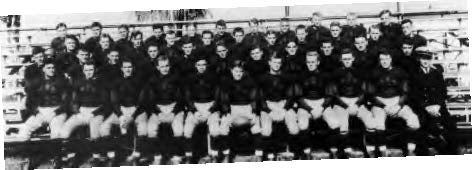With Sunday’s Super Bowl game likely to be peppered with talk of “blitzes,” “bombs” and the “neutral zone,” football fans can credit such sports talk to our armed forces, which helped develop the game in its early days, according to research by UCF political science lecturer Paul Vasquez.
Discovery News (https://www.rebelmouse.com/wordpress-vip-2401656056.html), an online affiliate of TV’s Discovery Channel and the Military Channel, featured his new study Friday.
Vasquez says the U.S. military shaped the emergence of college football from the late 19th century through the 1950s. The military’s use of football during World Wars I and II spread the popularity of the game, he says, adding that West Point capitalized on the draft to become a powerhouse during the 1940s.
Vasquez points out that military actors and wartime events spurred innovations in the sport such as separate squads for playing offense and defense, the first regional athletic conference and the NCAA, and coed cheerleading squads.
The armed forces started playing the game in 1882 when the Naval Academy in Annapolis, Md., established a team as a part of a military education. The U.S. Military Academy at West Point followed in 1890. The military branches used the sport to keep men fit and prepare them for the strategies of warfare.
The author’s original study, “America and the Garrison Stadium: How the U.S. Armed Forces Shaped College Football,” was printed recently in the journal Armed Forces & Society (http://afs.sagepub.com/content/early/2011/11/19/0095327X11426255.full.pdf+html).
